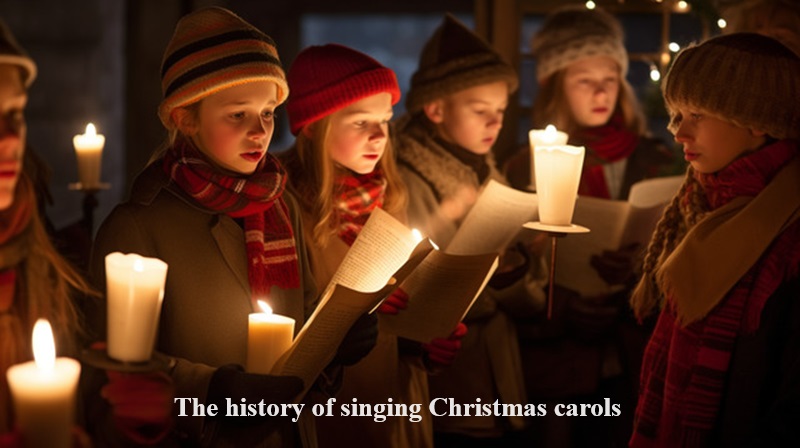
Christmas carols, a festive tradition, have a rich history intertwined with ancient pagan celebrations and Christian hymns. Originating from pagan songs sung at winter solstice celebrations, these songs accompanied dances around stone circles. The term “carol” stems from the old French word ‘carole,’ referring to a popular circle dance accompanied by singing.
Pagan festivities like the Roman Saturnalia, honoring the agricultural god Saturn, influenced Christmas traditions, such as wreaths, candles, feasting, and gift-giving. The transition of carols into Christian hymns began in 4th-century Rome, with Latin hymns evolving into rhymed stanzas in Northern European monasteries during the 9th and 10th centuries.
Early Christianity redirected pagan solstice traditions toward Christmas, introducing Christian songs. In 129, a Roman Bishop recommended the singing of a song called Angel’s Hymn at a Christmas service. However, these early carols were sung in Latin, diminishing public interest during the Middle Ages.
St. Francis of Assisi played a pivotal role in encouraging Christmas songs in native languages. Nativity plays in Assisi in 1223 featured carols, or ‘canticles,’ telling the Christian nativity story. The practice spread to other European countries, emphasizing regional languages over Latin.
Christmas carols in English emerged in a 1426 work listing twenty-five ‘caroles of Cristemas.’ Despite a ban on Christmas celebrations during Oliver Cromwell’s rule in 1647, carols persisted, sung in secret until the Victorian era. Victorian times witnessed a revival of carols, fueled by collections from William Sandys and Davis Gilbert.
The publication of “Christmas Carols, New and Old” in 1871 by Henry Ramsden Bramley and Sir John Stainer contributed significantly to the Victorian carol resurgence. Traditional carols often followed medieval chord patterns, creating a characteristic musical sound. Some, like “Personent hodie” and “Good King Wenceslas,” trace directly back to the Middle Ages.
While carol tunes may date back centuries, lyrics were often added later. England’s oldest surviving carol, “While Shepherds Watched Their Flocks By Night,” saw its 16th-century tune paired with 17th-century words in the 19th century. A festive tradition, carol singers, or Waits, once roamed medieval towns, and Charles Dickens mentioned them in his stories. The first carol service took place in Truro Cathedral, Cornwall, in 1880, organized by Edward White Benson, the First Bishop of Truro. Today, carol singers are found in various settings, often raising funds for charity instead of receiving traditional rewards like wassail.

Post Your Comments